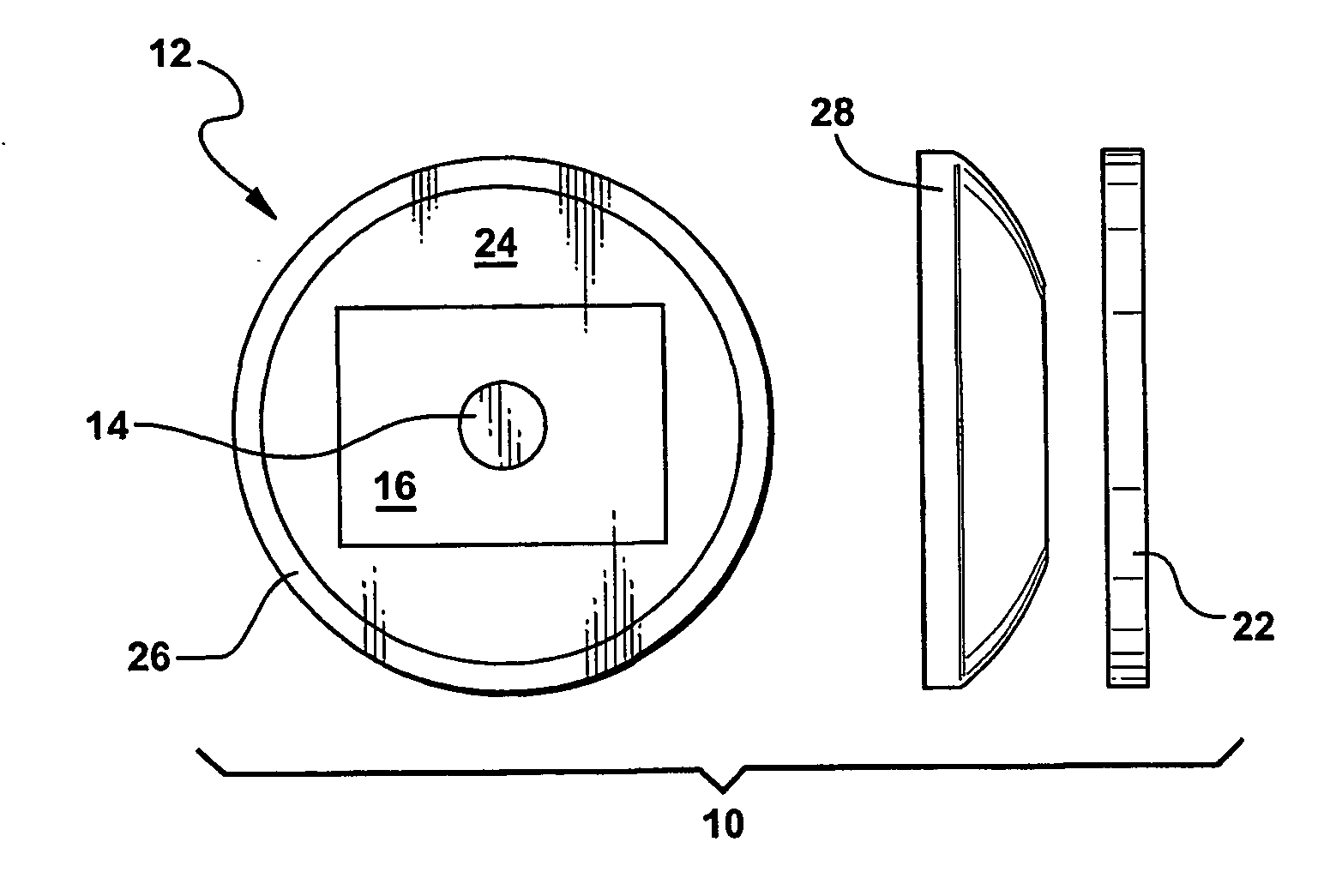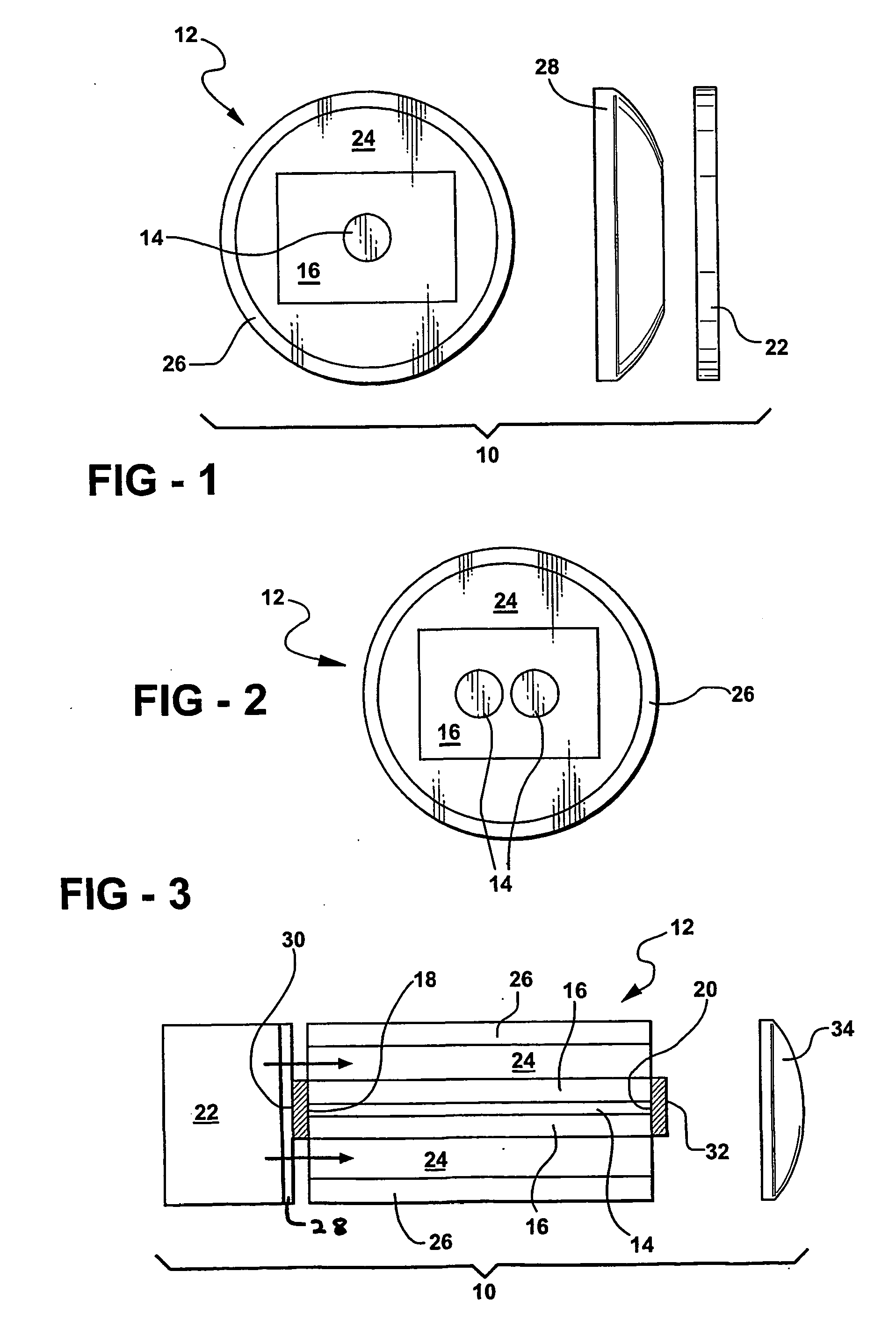Method of transferring energy in an optical fiber laser structure using energy migration
a technology of laser structure and optical fiber, applied in electromagnetic transmission, transmission, active medium materials, etc., can solve the problems of ineffective energy transfer from the pumping source to the core element, the method and other conventional methods of pumping the cladding element are deficient, and the power density of optical fiber laser structures can be developed with the power density,
- Summary
- Abstract
- Description
- Claims
- Application Information
AI Technical Summary
Benefits of technology
Problems solved by technology
Method used
Image
Examples
first embodiment
[0022] In the first embodiment, where the active gain component in the core element 14 is Yb, the energy migration component in the cladding element 16 preferably is Yb. In this embodiment, the Yb in the cladding element 16 is present in an amount from 5 to 50, preferably from 10 to 40, and most preferably from 12 to 30, parts by weight based on 100 parts by weight of the cladding element 16. In this embodiment, the concentration of Yb in the core element 14 is significantly lower than the concentration of Yb in the cladding element 16 to lower the threshold for lasing or for providing gain in the core element 14. Thus, the energy is pumped into the cladding Yb element 16 wherein the high level of Yb transfers the energy to the core element 14. The low level of Yb in the core element 14, relative to the level in the cladding element 16 causes the Yb in the core element 14 to lase. Thus, in this embodiment the energy migration component and the active gain component are the same spec...
second embodiment
[0023] In the second embodiment, where the active gain component in the core element 14 is Er, the energy migration component in the cladding and core elements 16, 14 preferably includes Yb. In this embodiment, the Yb in the cladding and core elements 16, 14 is present in an amount from 5 to 50, preferably from 10 to 40, and most preferably from 12 to 30, parts by weight based on 100 parts by weight of the cladding element 16 or the core element 14, respectively. In this embodiment, where Er functions as the active gain component and Yb functions as the energy migration component, the subject invention incorporates an energy migration component and an active gain component that are different species. Using Yb in the core element 14 and the cladding element 16 permits the energy to continue to migrate throughout an entire volume of the core element 14 and, at the same time, act as the sensitizing component to the Er. Using Yb as the sensitizing component in this embodiment is describ...
fourth embodiment
[0024] In the fourth embodiment, where the active gain component in the core element 14 includes Ho, the energy migration component in the core and cladding elements 14, 16 preferably includes ytterbium (Yb). In this embodiment, the Yb in the cladding element 16 and in the core element 14 is present in an amount from 5 to 50, preferably from 10 to 30, and most preferably from 15 to 25, parts by weight based on 100 parts by weight of the cladding element 16 and core element 14. Furthermore, in this embodiment, where Ho functions as the active gain component and Yb functions as the energy migration component, the subject invention further incorporates Tm in the core element 14 as a sensitizing component to the Ho. Using Tm as the sensitizing component in this embodiment is described further below.
[0025] In further alternative embodiments, the energy migration component in the cladding element 16 can comprise europium (Eu), terbium (Tb), cerium (Ce), and combinations thereof.
[0026] The...
PUM
 Login to View More
Login to View More Abstract
Description
Claims
Application Information
 Login to View More
Login to View More - R&D
- Intellectual Property
- Life Sciences
- Materials
- Tech Scout
- Unparalleled Data Quality
- Higher Quality Content
- 60% Fewer Hallucinations
Browse by: Latest US Patents, China's latest patents, Technical Efficacy Thesaurus, Application Domain, Technology Topic, Popular Technical Reports.
© 2025 PatSnap. All rights reserved.Legal|Privacy policy|Modern Slavery Act Transparency Statement|Sitemap|About US| Contact US: help@patsnap.com


